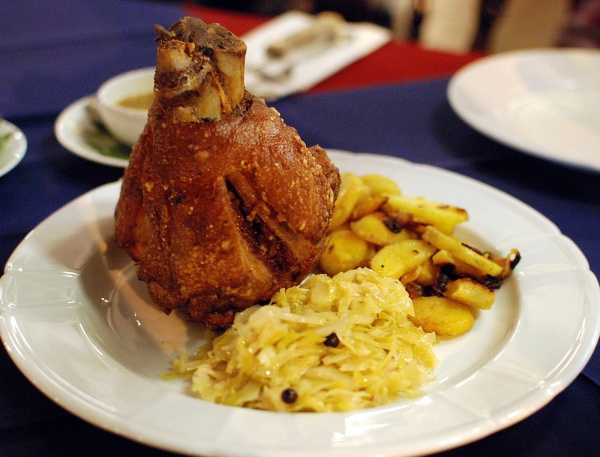Facts About Schweinshaxe
Schweinshaxe is a cherished dish in German cuisine, featuring a roasted ham hock from the lower part of a pig’s leg, just above the ankle. This hearty meal is especially popular in Bavaria, where it is known as Schweinshaxn or Sauhax. In other regions of Germany, you may encounter a similar dish called Eisbein, which involves pickling and gently boiling the ham hock.
Traditionally, Schweinshaxe was a peasant dish, meant to transform tough, inexpensive cuts of meat into tender and flavorful fare—much like Sauerbraten does for beef. Preparing Schweinshaxe requires patience: the meat is often marinated for several days and then slow-roasted for two to three hours. The result is a deliciously tender ham hock with a crispy exterior.
This delectable dish is usually served with a variety of potato and cabbage sides. In Austria, a similar dish called Stelze (or Stötzn/Stelzn) is prepared by marinating or pre-boiling the ham hock in a brine with caraway seeds and garlic before roasting it to crispy perfection. It is typically accompanied by mustard, horseradish, and pickled chili peppers.
When enjoying the Bavarian version of Schweinshaxe, it is often paired with potato dumplings and red cabbage, or sometimes with sauerkraut and potatoes. This dish is true comfort food, perfect for hearty appetites and those who appreciate rich, savory flavors.

 Czech Republic
Czech Republic